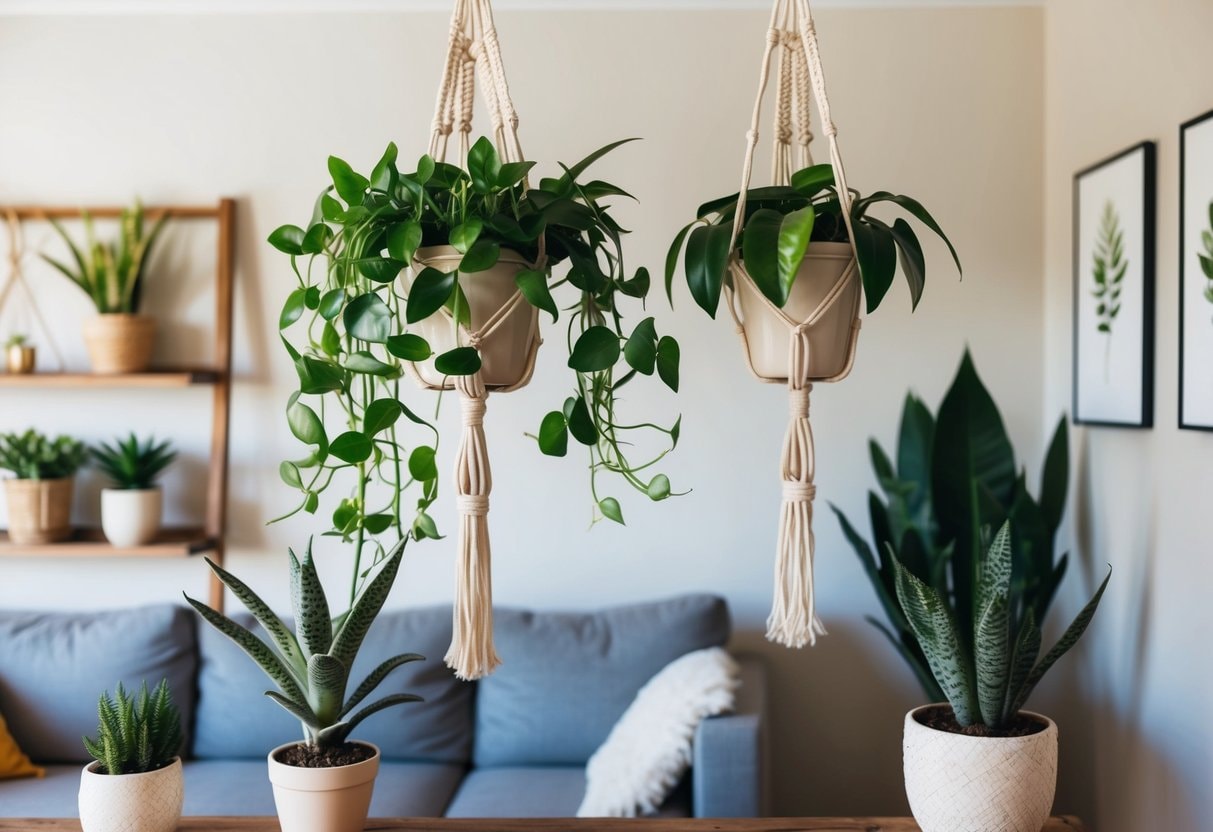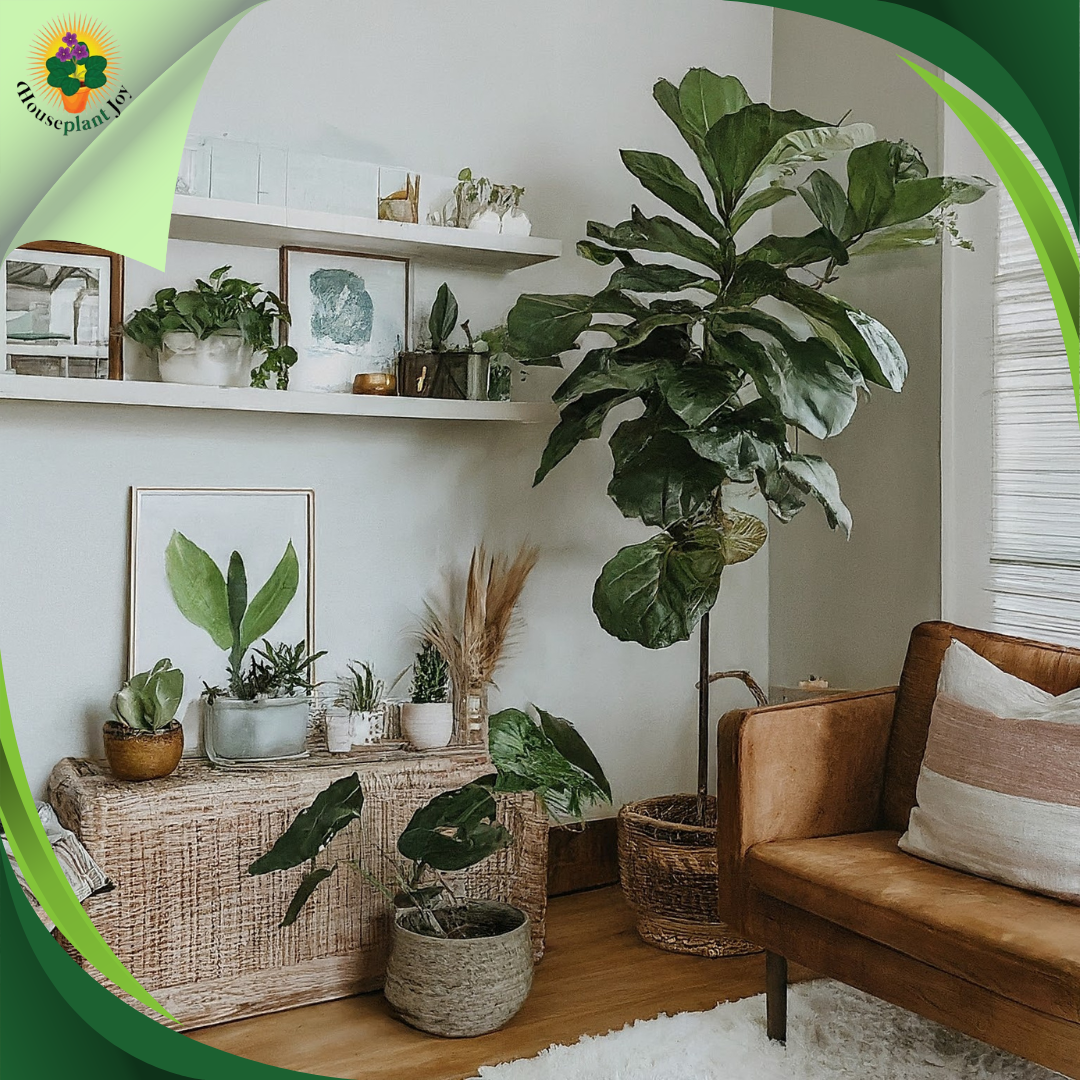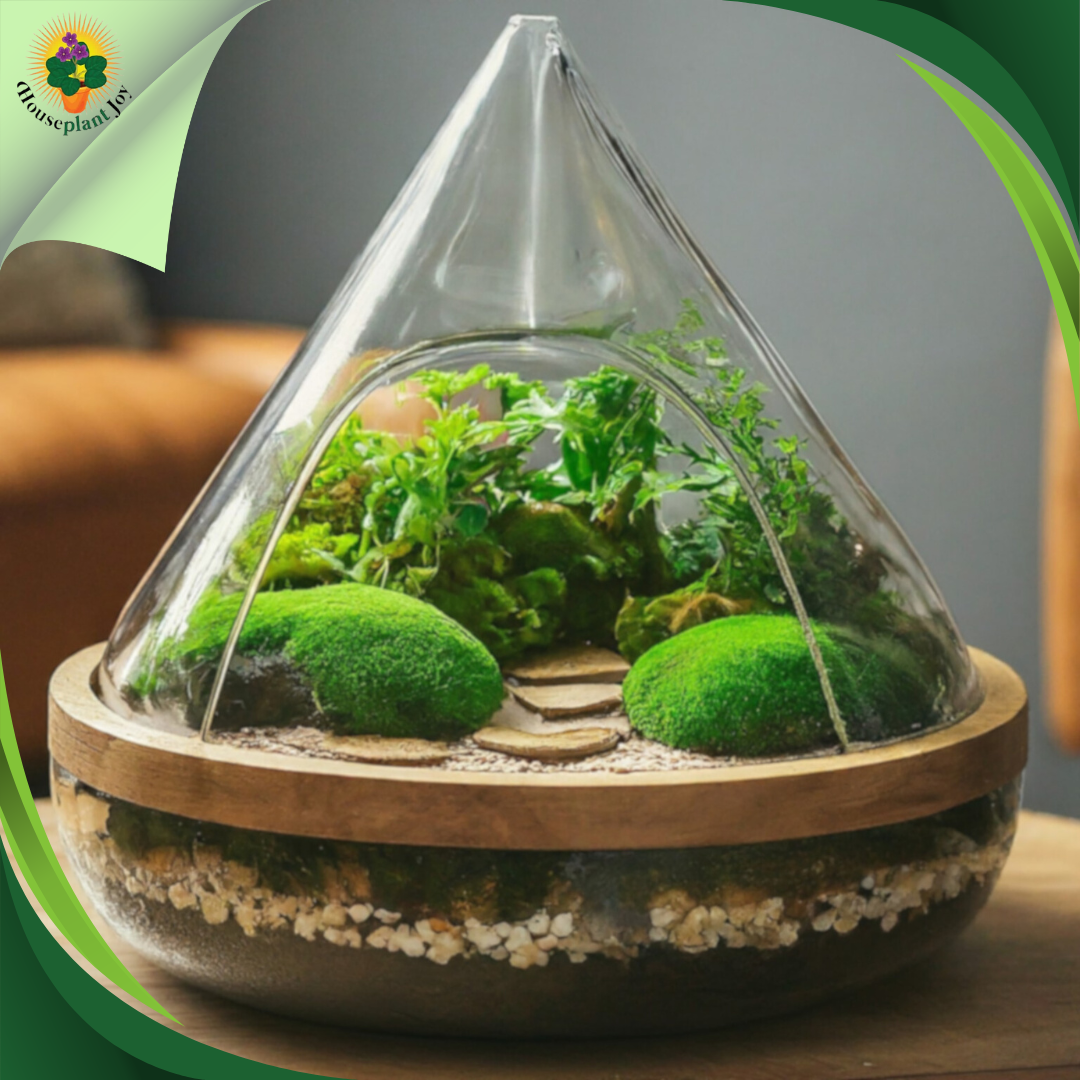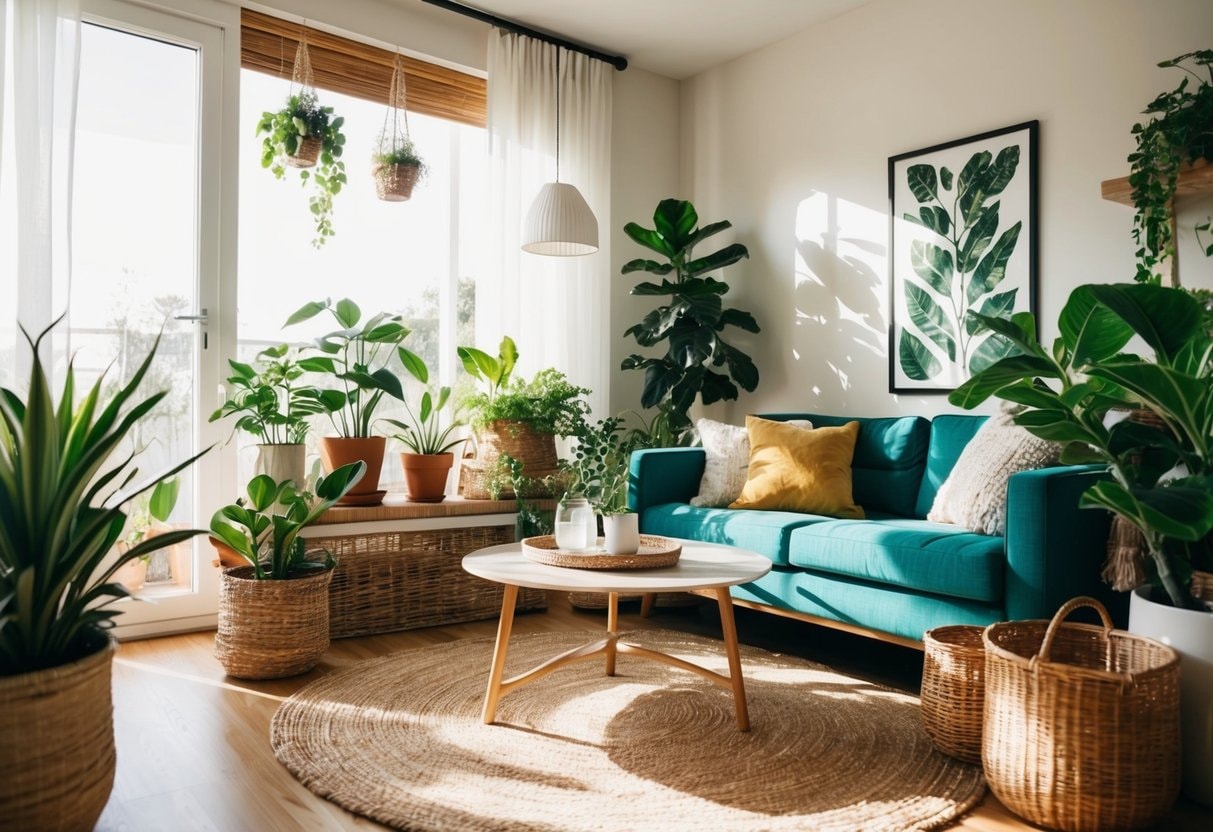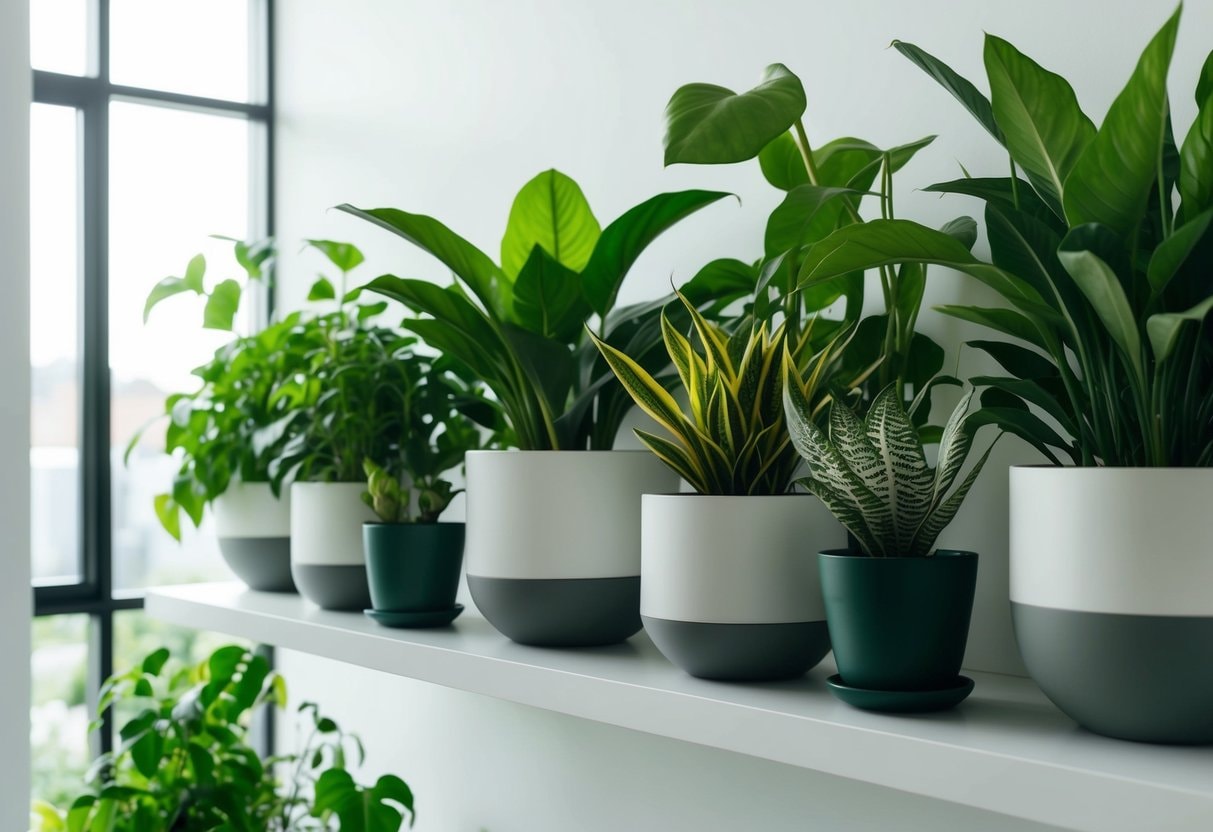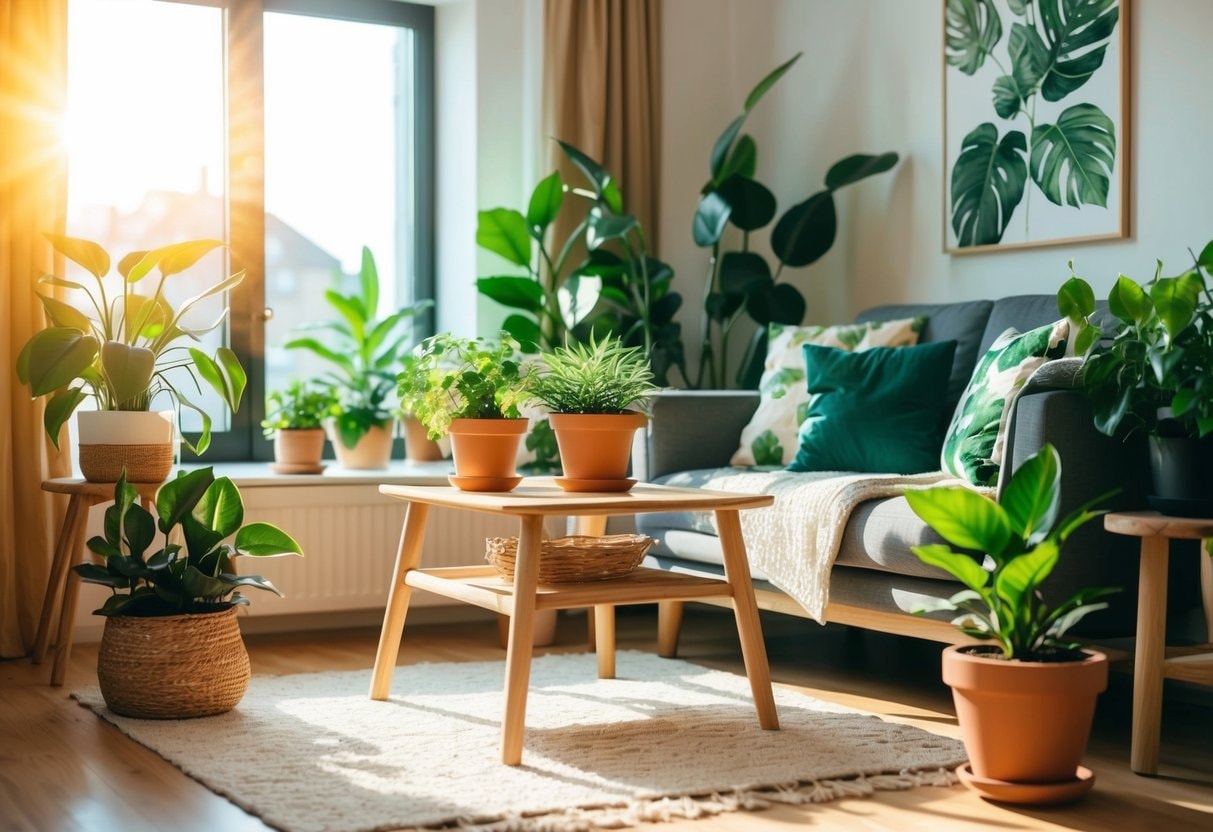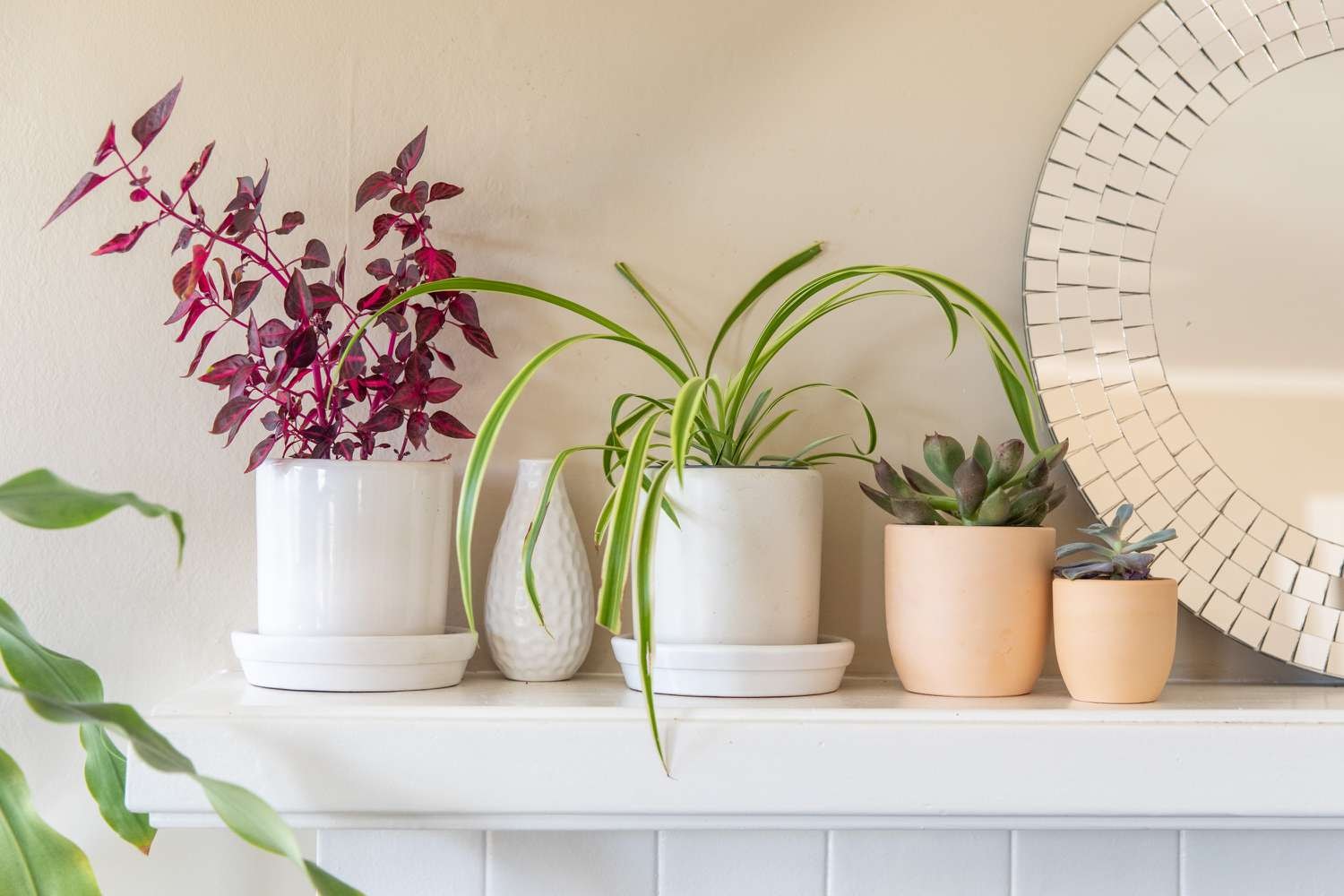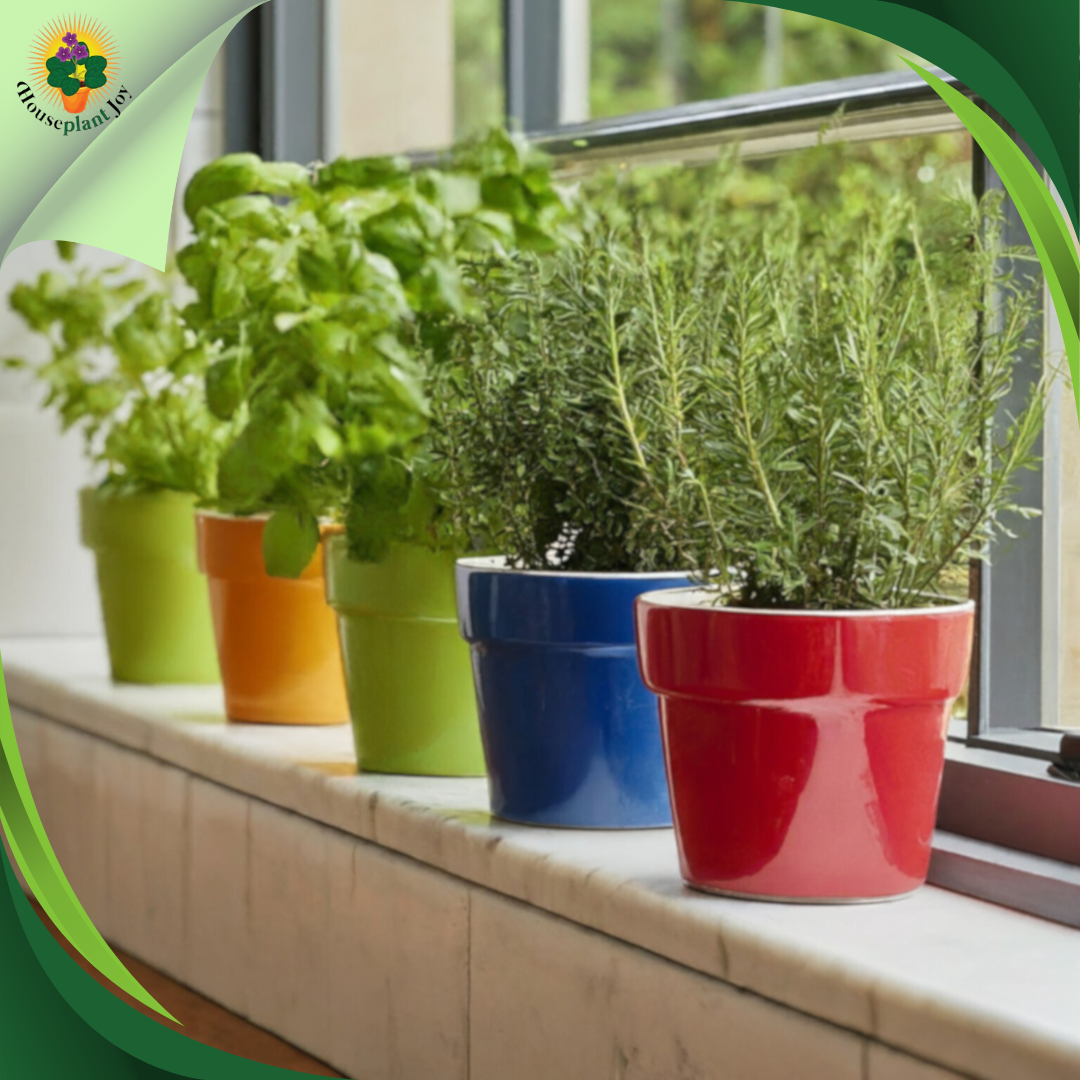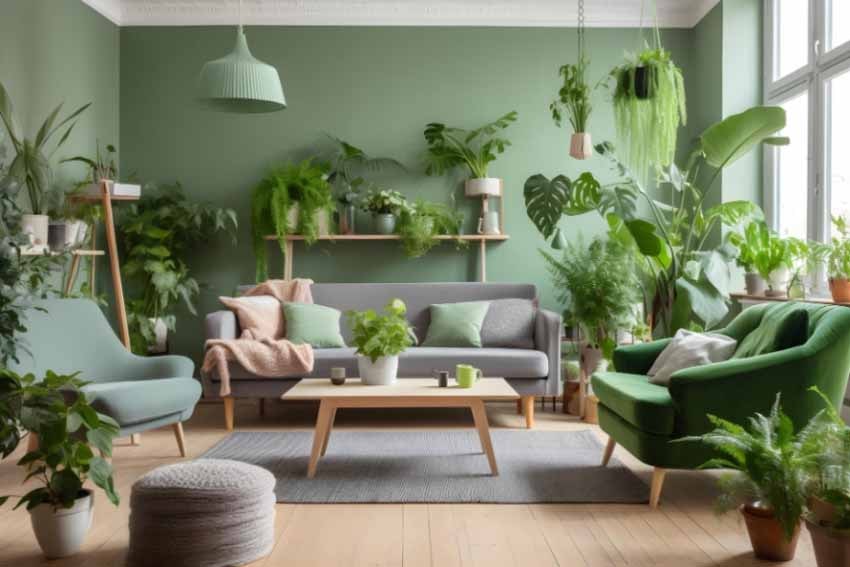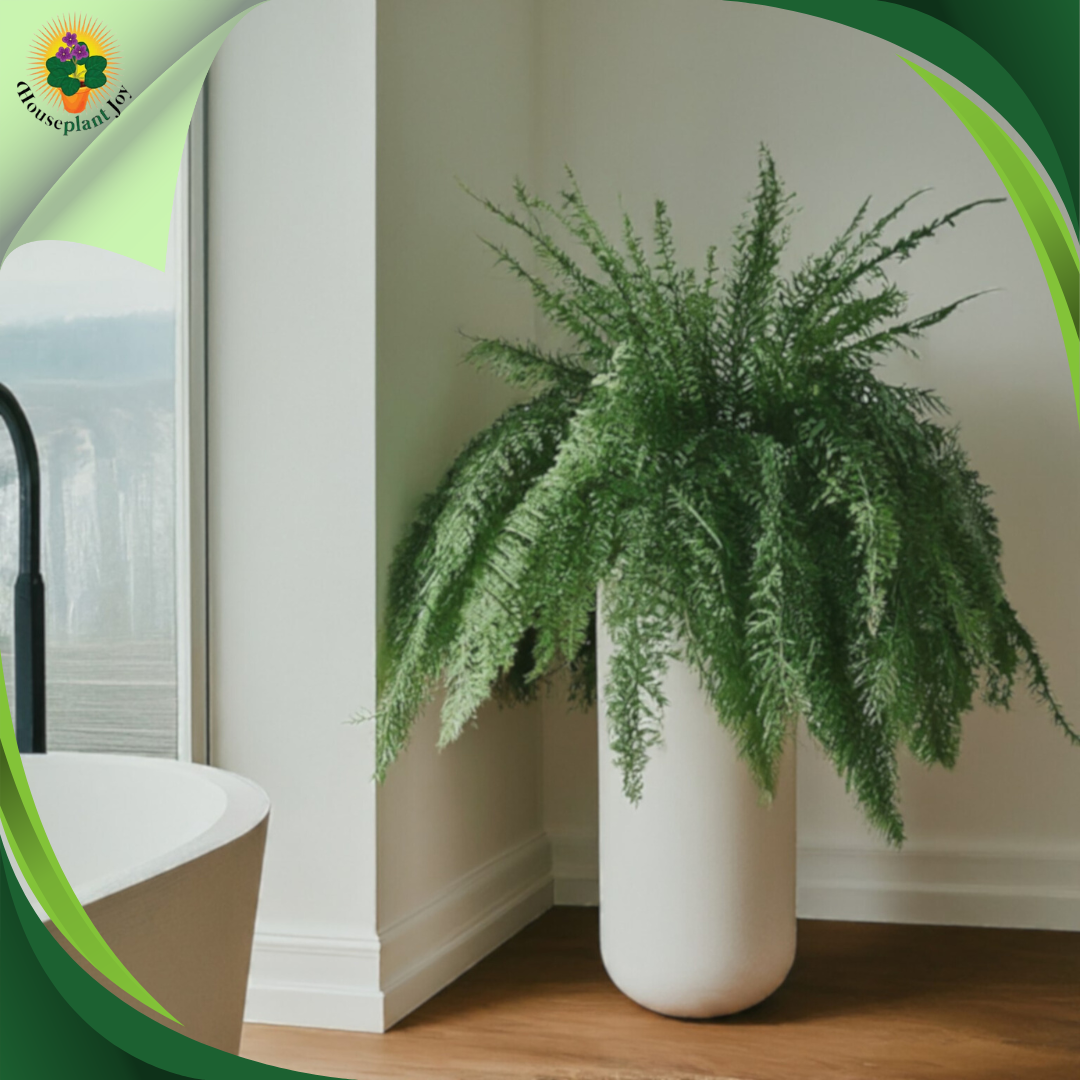HousePlantJoy is supported by our audience. When you purchase through one of our links, we may earn a small affiliate commission. As an Amazon Associate I earn from qualifying purchases. Your cost is not affected.
==================
Bringing the beauty of nature indoors not only enhances your home’s aesthetic but also creates a soothing atmosphere that uplifts your spirit. In the world of home decor, plant-themed elements have emerged as a captivating trend, seamlessly blending the charm of greenery with various design styles. Integrating nature into your home’s style can be achieved through lush, leafy patterns or vibrant botanical prints, adding a fresh touch that resonates with the natural world.
This article explores innovative ways to integrate plant-themed decor into your home, transforming every room into a serene sanctuary. From statement wall art to subtle accents, discover how to infuse your space with the vitality of nature and create a harmonious environment that reflects your unique style. Embrace the calming effects of plants and let your home flourish with the beauty of the outdoors.
Integrating Nature into Your Home’s Style – Bring the Outdoors In
Plants bring life and freshness to any home. They clean the air, boost your mood, and add a touch of nature to your living space. Integrating plants into your decor can transform your home into a calm, green oasis. You don’t need a green thumb to enjoy the plant-themed decor. There are options for every skill level and space, from small succulents to large leafy trees.
Curved shapes and rounded edges can soften your rooms and create a relaxed vibe. Updating your planters can make a big difference. Choose pots that match your style, from antique vessels to modern ceramics. Mix natural textures like cotton, linen, and jute to create a harmonious space.
Benefits of Integrating Plants into Your Home
Adding plants to your home can boost your mood and health. They clean the air by removing toxins and producing oxygen. This can help you breathe easier and feel more alert. Plants also reduce stress and increase productivity. Seeing greenery can calm your mind and help you focus better on tasks.
Your home will look more lively and welcoming with plants. They add color, texture, and life to any room. Plants can make small spaces feel bigger and cozier. Some plants, like lavender or jasmine, can even help you sleep better. Their scents are known to promote relaxation and improve sleep quality.
Different Styles of Plant-Themed Decor
Biophilic design is a popular style that brings nature indoors. It uses natural materials, shapes, and patterns to connect with the outdoors. Minimalist plant decor focuses on a few statement plants in simple pots. This style works well in modern homes with clean lines.
Bohemian plant decor mixes many types of plants with colorful pots and hangers. It creates a relaxed, eclectic vibe. Elegant plant integration uses plants as living art. You can display them in unique containers or create living walls for a stunning effect. Tropical-inspired decor features lush, large-leafed plants to create a vacation-like atmosphere in your home.
Setting the Foundation for Plant Decor
Bringing plants into your home starts with smart choices and proper preparation. Integrating nature into your home’s style begins with selecting the right plants, ensuring ideal conditions, and gathering essential supplies. These steps set you up for success in creating a thriving indoor garden that enhances your living space.
Choosing the Right Plants
Pick plants that match your lifestyle and home environment. If you’re new to plant care, start with hardy, low-maintenance options. Pothos, snake plants, and ZZ plants are great for beginners. For a pop of color, try flowering plants like peace lilies or orchids. Succulents work well in dry, sunny spots. Ferns love humidity and indirect light.
Consider your space, too. Tall plants like fiddle leaf figs make statement pieces in large rooms. Smaller plants fit nicely on shelves or desks. Mix different textures and leaf shapes for visual interest. Combine trailing plants with upright ones. This creates depth and variety in your plant displays.
Understanding Light and Space Requirements
Take a close look at the light in your home. Most plants need bright, indirect light to thrive. South-facing windows offer the most light, while north-facing ones provide gentler rays. If you have low-light areas, don’t worry. Some plants, like snake plants and ZZ plants, can handle dimmer conditions. For very dark spots, consider artificial grow lights.
Think about temperature and humidity, too. Most houseplants prefer temperatures between 60-75°F. Some tropical plants might need extra humidity. You can use a pebble tray or a small humidifier to boost moisture levels. Give your plants room to grow. Check the mature size of each plant before buying. Make sure you have enough space for it to reach its full potential.
Essential Supplies for Plant Care
Start with the basics: pots, soil, and water. Choose pots with drainage holes to prevent root rot. Use planters that complement your decor. Ceramic, terracotta, and woven baskets all work well. Get a good quality potting mix. Different plants might need special soil blends. Cacti and succulents, for example, prefer a fast-draining mix.
Invest in a watering can with a narrow spout for precise watering. A spray bottle helps with misting humidity-loving plants. Don’t forget plant food. Most houseplants benefit from regular fertilizing during the growing season. A basic, all-purpose fertilizer works for many plants. Pruning shears keep your plants tidy and healthy. Use them to trim dead leaves and encourage new growth.
Design Principles for Plant-Themed Spaces
Bringing plants into your home creates a fresh, natural vibe, perfectly suited for integrating nature into your home’s style. The right design choices can make your plant-themed spaces truly shine. Let’s look at some key principles to guide your green decorating.
Color Harmony in Plant Decoration
When decorating with plants, think about color balance. Green is your main hue, but you can play with shades and pops of color. Try grouping plants with similar leaf colors. This creates a cohesive look. You can use plants with colorful foliage as accents.
Consider your pots and planters, too. Choose colors that complement your plants and room decor. Neutral tones like white, beige, or gray often work well. Don’t forget about flowers! Use their colors to inspire your decor choices if you have blooming plants. A vase that matches a flower’s hue can tie the room together.
Incorporating Textures and Patterns
Plants bring amazing textures to your space. Mix and match different leaf shapes and sizes for visual interest. Smooth, glossy leaves can contrast nicely with fuzzy or spiky plants. Large-leaved plants like monstera pair well with delicate ferns. You can echo plant textures in your decor. Try:
- Woven baskets as planters.
- Leafy wallpaper patterns.
- Throw pillows with botanical prints.
Natural materials like wood, rattan, and jute complement plant textures beautifully. A wooden plant stand or rattan chair can enhance your nature-inspired look.
Creating Focal Points with Plants
Use plants to draw the eye and define your space. A large, statement plant can be a room’s centerpiece. Good spots for focal point plants include:
- Empty corners.
- By windows.
- On coffee tables.
Grouping plants at different heights creates visual interest. Try a tall floor plant, a medium-sized table, and a small hanging plant together. You can also use plant arrangements to divide spaces in open floor plans. A row of plants on a shelf or console table can act as a natural room divider. Remember to give your focal point plants enough space. They should stand out and not look crowded.
Wall-Mounted and Hanging Plants
Vertical gardens can transform bare walls into lush green spaces. Use hanging planters or wall-mounted pockets to create a living wall. Mix different plants for varied textures and colors. Macramé plant hangers add a boho touch to any room. Hang them at different heights for visual interest.
You can even make your own with some rope and basic knot-tying skills. For a modern look, try magnetic planters on metal surfaces. These are great for small spaces like fridges or file cabinets. Choose tiny succulents or air plants for these unique displays.
Terrariums and Miniature Gardens
Create a mini ecosystem in a glass container. Terrariums are low-maintenance and perfect for small spaces. Use rocks, sand, and activated charcoal as a base. Then, add tiny plants like ferns, mosses, or succulents. Fairy gardens are a whimsical twist on terrariums.
Add miniature houses, furniture, and figurines to create a magical scene. Kids love helping with these enchanting displays. Try a water terrarium with aquatic plants for something different. Float water lilies or grow lucky bamboo in pretty glass vases.
Seasonal Plant Decor Themes
Change up your plant displays with the seasons. In spring, showcase flowering potted plants like tulips or daffodils. Group them in colorful containers on a windowsill or dining table. Create a tropical vibe for summer with large-leafed plants like monstera or palm trees. Add some citrus trees in bright pots for a fresh, sunny feel.
In fall, display plants with warm-colored foliage. Think crotons or coleus in rich reds and oranges. Pair them with pumpkins or gourds for a cozy autumn atmosphere. Winter calls for evergreens and plants with interesting textures. Try arrangements with pine branches, holly, and white-flowered plants like paperwhites or Christmas cactus.
Space-Saving Solutions for Small Areas
Living in a small space doesn’t mean you can’t have plants. Vertical gardens are great for adding greenery without taking up floor space. You can hang plants from the ceiling or mount them on walls. Shelves are another smart option. Put them near windows to give your plants the light they need.
You can also use hanging planters in corners or by windows. Don’t forget about small plants on desks or windowsills. Succulents and air plants are perfect for tight spots. They need little care and can fit almost anywhere.
Balancing Aesthetics and Air Quality
Plants don’t just look good – they clean your air too. Some plants are better at this than others. Snake, spider, and peace lilies are top picks for air cleaning. Place these plants in rooms where you spend a lot of time, like your bedroom or living room.
They’ll work hard to keep your air fresh while adding beauty to your space. Remember to choose pots that match your style. This helps your air-cleaning plants blend in with your decor. You can find planters in many colors and patterns to suit your taste.
Integrating Edible Plants in Living Spaces
Growing your food at home is fun and useful. Herbs are easy to start with. You can grow basil, mint, or rosemary in small pots on your kitchen windowsill. For a bigger project, try a small indoor vegetable garden. Cherry tomatoes and lettuce grow well indoors.
You’ll need a sunny spot or grow lights to help them thrive. Herb gardens can serve a functional purpose in your kitchen decor. Hang them on the wall or set up a tiered stand. This keeps them handy for cooking and adds a fresh, green touch to your space.
Routine Care for Houseplants
Water your plants regularly, but don’t overdo it. Check the soil moisture with your finger before watering. Most plants like to dry out a bit between waterings. Dust the leaves gently with a soft, damp cloth to keep them clean and healthy. This helps your plants breathe and look their best.
Give your plants the right amount of light. Some like bright spots, while others prefer shade. Move them around if needed to find their happy place. Fertilize during the growing season to keep your plants strong. Use a balanced, water-soluble fertilizer every few weeks.
Common Issues and Solutions
Yellow leaves often mean too much water. Let the soil dry out more between waterings. Brown leaf tips could be from low humidity. Mist your plants or use a pebble tray with water to boost moisture in the air. If you see small bugs, wipe leaves with soapy water or use neem oil. This can help get rid of pests without harsh chemicals.
Drooping plants might need more water. But first, check if the pot has drainage holes. Waterlogged roots can cause drooping, too. For leggy plants stretching toward light, rotate them regularly. This helps them grow evenly and stay full.
Updating Your Decor with Seasonal Changes
Switch up your plant display with the seasons. In spring, bring out colorful flowering plants like orchids or African violets. Add trailing plants like pothos for summer to create a lush jungle vibe. They’re easy to care for and grow quickly. In fall, incorporate plants with warm-toned leaves like crotons.
Their red and orange hues match the season perfectly. During winter, focus on hardy plants that can handle drier indoor air. Snake plants and ZZ plants are great choices. Layer plants at different heights to create interest. Use plant stands or hanging planters to vary your display throughout the year.
Accessorizing with Planters and Pots
Choose planters that complement your decor style. Mix and match different sizes, shapes, and materials for visual interest. Ceramic, terracotta, and glass planters can add unique touches to your space.
Consider using colorful or patterned pots to liven up bland areas. You can also opt for simple white planters for a modern look. Don’t forget about hanging planters. They’re great for small spaces and add vertical interest to your rooms.
Incorporating Natural Elements Beyond Plants
Bring in other natural materials to enhance your plant decor. Use woven baskets as plant holders or decorative accents. Add wooden elements like driftwood or tree slices as plant stands or table decor. Stone and pebbles can be used in planters or as decorative elements on shelves. Natural fiber rugs and textiles with botanical prints can tie your plant theme together. Consider adding nature-inspired artwork or wall hangings to complete the look.
Smart Technology for Plant Care
Make plant care easier with smart gadgets. Self-watering pots can help keep your plants healthy even when you’re away. Use plant care apps to track watering schedules and get care tips for different plant species. Some apps even identify plants from photos.
Embrace Nature: Transform Your Home with Plant-Themed Decor
Incorporating plant-themed decor into your home is more than just a trend; it’s a transformative approach that fosters a calming and refreshing atmosphere. By integrating nature into your home’s style, you can create an inviting oasis that enhances both your space and your well-being. Whether you choose bold statement plants, delicate terrariums, or seasonal arrangements, each element contributes to a lively, vibrant environment that reflects your personality.
As you embark on your journey of integrating nature into your decor, remember the benefits that plants bring—cleaner air, improved mood, and a touch of tranquility. With thoughtful choices in plant selection, arrangement, and care, you can cultivate a thriving indoor garden that not only beautifies your home but also nurtures your spirit. Embrace the endless possibilities of plant-themed decor, and let your living space flourish with the vitality of the outdoors.
How Can I Create a Biophilic Design in My Home?
What Are Some Simple Ways to Incorporate Plants Into My Interior Design?
What Are the Best Plants to Use to Decorate a Living Room?
Become Part of the Houseplant Joy Community!
Whether you’re just starting out or have years of experience, Houseplant Joy is the perfect space for you. Join a community that celebrates your love for everything leafy and green!
Join Us:
Find inspiration with new tips and tricks, explore exciting plants, and share your own plant parenting stories. Don’t miss out—follow us and let’s grow together!


